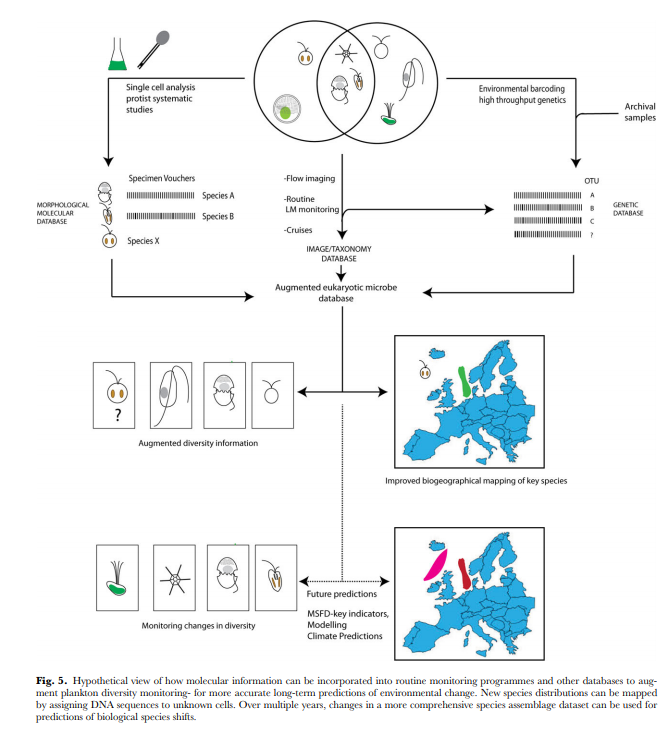
Can molecular tools enhance long-term monitoring of marine protists?
Abstract
Protists (microbial eukaryotes) are diverse, major components of marine ecosystems, and are fundamental to ecosystem services. In the last 10 years, molecular studies have highlighted substantial novel diversity in marine systems including sequences with no taxonomic context. At the same time, many known protists remain without a DNA identity. Since the majority of pelagic protists are too small to identify by light microscopy, most are neither comprehensively or regularly taken into account, particularly in Long-term Ecological Research Sites. This potentially undermines the quality of research and the accuracy of predictions about biological species shifts in a changing environment. The ICES Working Group for Phytoplankton and Microbial Ecology conducted a questionnaire survey in 2013–2014 on methods and identification of protists using molecular methods plus a literature review of protist molecular diversity studies. The results revealed an increased use of high-throughput sequencing methods and a recognition that sequence data enhance the overall datasets on protist species composition. However, we found only a few long-term molecular studies and noticed a lack of integration between microscopic and molecular methods. Here, we discuss and put forward recommendations to improve and make molecular methods more accessible to Long-term Ecological Research Site investigators.